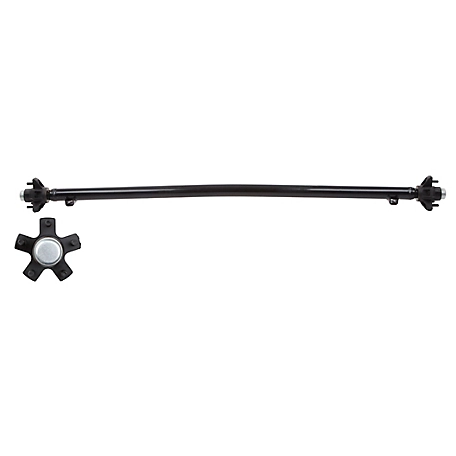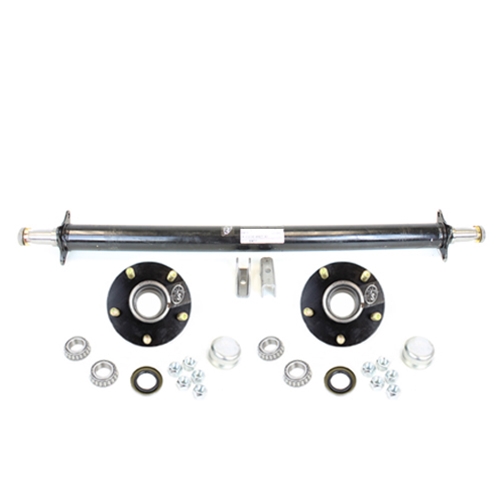Product Description
| Product Name | Sand Foot |
| Use | Trailer Parts |
| OE NO. | OEM Service Provided |
| Place of Origin | China |
| Brand Name | DRL |
| Application | Trailer Truck Used |
| Warranty | 12 Months |
| Quality | High-Quality |
| Packing | Box Packing |
We are a professional enterprise engaged in the manufacture and sale of Trailer suspensions, Trailer axles, Trailer landing gears, Semi-trailers and trailers. We can supply a wide range of products to meet the ever-changing market demands. Customized orders are welcomed.
Our annual turnover is USD10 million. Our main markets include Japan, Europe, Southeast Asia, the Middle East and mainland China.
Our company insists on our business spirit of “Customers As Gods, Quality As Top”. We are increasingly expanding our international market share based on quality products, excellent services, reasonable prices and timely delivery. Please contact us at any time for more information.
We will treasure each opportunity to cooperate with you. We will use our Sincerity and Good Quality to win your trust!
Q1. What is your terms of packing?
A: Generally, we pack our goods in neutral white boxes and brown cartons. If you have legally registered patent,
we can pack the goods in your branded boxes after getting your authorization letters.
Q2. What is your terms of payment?
A: T/T 30% as deposit, and 70% before delivery. We’ll show you the photos of the products and packages
before you pay the balance.
Q3. What is your terms of delivery?
A: EXW, FOB, CFR, CIF, DDU.
Q4. How about your delivery time?
A: Generally, it will take 5 to 10 days after receiving your advance payment. The specific delivery time depends
on the items and the quantity of your order.
Q5. Can you produce according to the samples?
A: Yes, we can produce by your samples or technical drawings. We can build the molds and fixtures.
Q6. What is your sample policy?
A: We can supply the sample if we have ready parts in stock, but the customers have to pay the sample cost and
the courier cost.
Q7. Do you test all your goods before delivery?
A: Yes, we have 100% test before delivery
Q8: How do you make our business long-term and good relationship?
A:1. We keep good quality and competitive price to ensure our customers benefit ;
2. We respect every customer as our friend and we sincerely do business and make friends with them,
no matter where they come from.
| After-sales Service: | 12 Months |
|---|---|
| Quality: | High Quality |
| Color: | Customer Demands |
| Use: | Trailer Parts |
| Product Name: | Sand Foot |
| Transport Package: | Pallet |
| Customization: |
Available
| Customized Request |
|---|

Can you provide examples of common trailer types that use different axles?
Certainly, various types of trailers use different axles to meet their specific needs:
- Utility Trailers: Smaller utility trailers often use single axles for lighter loads, while larger ones may have tandem axles for increased capacity.
- Boat Trailers: Boat trailers may feature multiple axles to support the weight of different-sized boats.
- Travel Trailers: Travel trailers come in various sizes, each with axles suitable for their weight and towing requirements.
- Horse Trailers: Depending on the number of horses they carry, horse trailers use single or multiple axles with features for animal safety.
- Cargo Trailers: Cargo trailers range from smaller single-axle versions to larger tandem or multi-axle trailers for transporting goods.
- Flatbed Trailers: These trailers for heavy loads feature tandem or multi-axle configurations to support oversized cargo.
- Dump Trailers: Trailers used for frequent dumping of materials come with robust axles designed for heavy use.
- Refrigerated Trailers: Reefer trailers use axles suitable for both the weight of goods and the requirements of refrigeration systems.
- Specialty Trailers: Car haulers, concession trailers, and equipment trailers come with axles tailored to their specific purposes and loads.
In summary, the choice of axles depends on the trailer type and its intended use, load capacity, and towing requirements.

What are the key considerations when selecting the right trailer axle for a specific application?
Choosing the appropriate trailer axle for a specific application involves several critical considerations:
- Weight Capacity: Determine the maximum weight the axle will need to support. This includes the trailer’s payload and the weight of the trailer itself. Ensure the selected axle has a weight capacity that exceeds the application’s requirements to provide a safety margin.
- Axle Type: Select the axle type based on the application. Common types include straight axles, drop axles, and torsion axles. The choice depends on factors like ground clearance, load height, and suspension design.
- Axle Configuration: Decide on the number of axles needed. Single axles are suitable for lighter loads, while tandem and tri-axle configurations offer higher weight capacities. Multi-axle setups provide better weight distribution.
- Suspension Type: Choose the appropriate suspension system, such as leaf spring, air ride, or torsion suspension. The suspension affects ride quality, load stability, and maintenance requirements.
- Brake System: Consider the braking requirements. Larger and heavier trailers often require electric or hydraulic brakes. Ensure the axle accommodates the necessary brake system, including the brake size and type.
- Axle Material: Select the axle material, typically steel or aluminum. Steel axles are durable and cost-effective, while aluminum axles are lighter and corrosion-resistant. The choice depends on the application’s demands and budget.
- Hub and Spindle Type: Choose hubs and spindles compatible with the axle. The hub style affects the type of wheel and tire you can use, while spindle size impacts weight capacity and bearing compatibility.
- Wheel Bolt Pattern: Ensure the axle’s hub and wheel bolt patterns match to avoid compatibility issues with the wheels and tires you plan to use.
- Ground Clearance: Consider the required ground clearance for the application. Lower ground clearance may be suitable for highway travel, while off-road or specialty trailers may need increased clearance.
- Legal Compliance: Ensure that the selected axle and trailer configuration comply with local and national regulations regarding weight limits, axle spacing, and safety requirements.
- Manufacturer and Warranty: Choose a reputable axle manufacturer with a track record for quality and durability. Check the warranty and support offered by the manufacturer.
- Budget: Evaluate the budget constraints for the axle and select an option that balances cost-effectiveness with meeting the application’s needs.
By carefully considering these factors, you can select the right trailer axle that ensures safe and efficient performance for your specific application.

What are the components of a trailer axle assembly and their functions?
A trailer axle assembly consists of several key components, each with specific functions:
1. Axle Beam:
– The axle beam is the central load-bearing component. It supports the trailer’s weight and distributes it to the wheels. The axle beam is the main structural element of the assembly.
2. Spindles:
– Spindles are the attachment points for the wheels. They connect the wheels to the axle beam, allowing them to rotate. Properly lubricated spindles ensure smooth wheel movement.
3. Hubs and Bearings:
– Hubs are the wheel-mounting components, and bearings allow the wheels to rotate freely. These components are crucial for reducing friction and maintaining wheel movement.
4. Brakes (Optional):
– Some trailer axles are equipped with brakes, including electric or hydraulic systems. Brakes help the trailer come to a controlled stop and enhance safety during towing.
5. Suspension System:
– The suspension system, which can be leaf springs, torsion axles, or air suspension, absorbs shocks and vibrations, ensuring a smoother ride and protecting the trailer’s cargo.
6. U-Bolts and Plates:
– U-bolts secure the axle assembly to the trailer’s frame using axle plates. They ensure proper alignment and stability of the axle assembly.
7. Mounting Hardware:
– Various nuts, bolts, and washers are used to secure components in the axle assembly, ensuring they remain in place during operation.
8. Axle Beam Brackets:
– These brackets provide additional support and structural integrity to the axle beam, helping distribute weight evenly and reduce stress on the axle.
9. Wiring and Connectors (Optional):
– If the axle assembly includes brakes, it may also have wiring and connectors for brake activation. These components allow the trailer’s braking system to communicate with the towing vehicle.
– In summary, the components of a trailer axle assembly work together to support the trailer’s weight, facilitate wheel movement, provide braking capabilities (if equipped), and ensure a smooth and stable ride. Proper maintenance of these components is essential for safe and reliable trailer operation.


editor by CX 2023-11-16